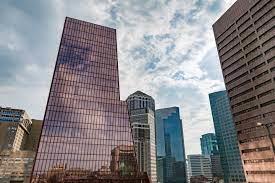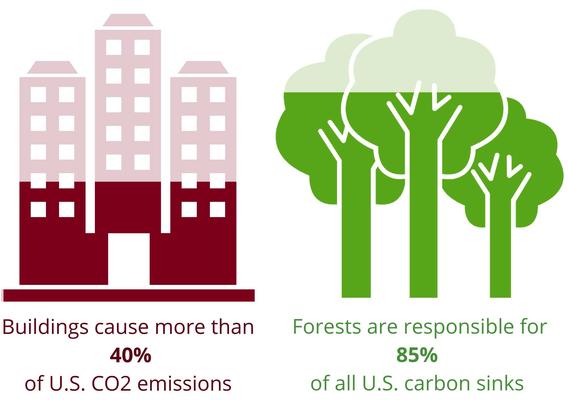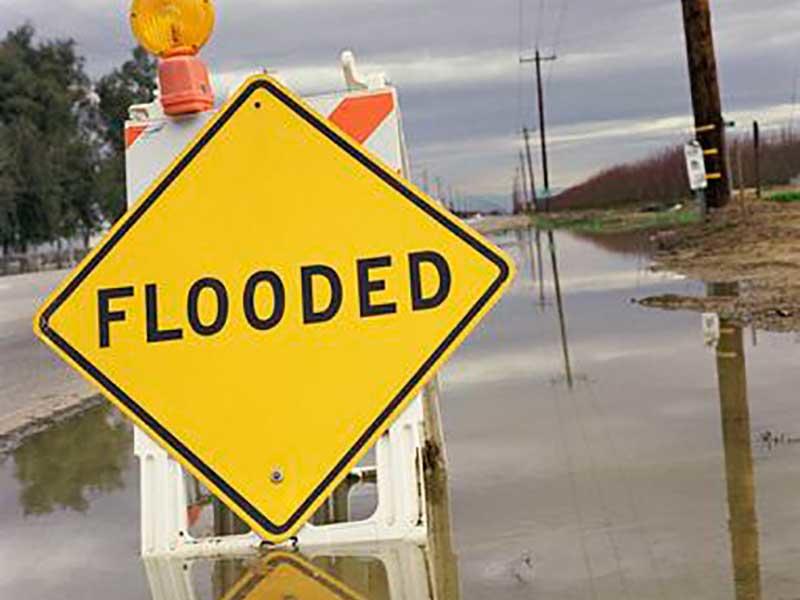Our Changing Built Environment
The transportation sector includes roads, highways, airports, railroads, public transit, ports, and bicycle trails, and it accounted for 29% of total greenhouse gas emissions in the U.S. in 2019. Through our transportation we emit carbon dioxide, which directly contributes to climate change, and the precursors of ground-level ozone, which degrades air quality. But transportation is also affected by climate change: excessive heat can cause roads to buckle, and flooding can wipe out roads, rails, and public transit systems alike.

Buildings can be categorized as residential (such as homes and apartment buildings), commercial (such as businesses), and industrial (such as factories). Residential, commercial, and industrial buildings account for 43% of U.S. carbon dioxide emissions, mostly through heating, ventilation and concrete production. As with transportation, the interaction between buildings and climate change is a two-way street. Rising temperatures and the urban heat island effect can result in a feedback cycle where cities are hotter, so residents run more air conditioning, which requires burning fossil fuels and in turn contributes to global warming. Buildings are also at risk during flooding and, in some places, wildfires.

The third component of the built environment is land use and land use change. As forests are torn down in favor of agriculture or cities, what was once a carbon "sink" (an area where carbon dioxide is taken up and stored) becomes a carbon source. This can contribute to climate change. In 2019, forests and other lands absorbed 12.4% of the carbon dioxide that was emitted, while the conversion of forests to cropland and settlements contributed 2% of U.S. carbon dioxide emissions. In addition, surface soils without trees to hold them together are more susceptible to erosion, and impervious surfaces in cities prevent water from soaking into the ground, making runoff and flooding worse.


Consequences
References & Suggested Reading
Environmental Protection Agency, 2017: Multi-model Framework for Quantitative Sectoral Impacts Analysis: A Technical Report for the Fourth National Climate Assessment. Report. URL.
Environmental Protection Agency, 2021: Inventory of U.S. Greenhouse Gas Emissions and Sinks. Report. URL.
Fuladlu, K., M. Riza, M. Ilkan, 2018: The effect of rapid urbanization on the physical modification of urban area. The 5th International Conference on Architecture and Built Environment with Awards. URL.
Moss, et al., 2017: Adapting to Climate Change in Minnesota: 2017 Report of the Interagency Climate Adaptation Team. Report. URL.
Younger, M., et al., 2008: The Built Environment, Climate Change, and Health. Opportunities for Co-Benefits. American Journal of Preventive Medicine. doi:https://doi.org/10.1016/j.amepre.2008.08.017
USGCRP, 2018: Impacts, Risks, and Adaptation in the United States: Fourth National Climate Assessment, Volume II [Reidmiller, D.R., C.W. Avery, D.R. Easterling, K.E. Kunkel, K.L.M. Lewis, T.K. Maycock, and B.C. Stewart (eds.)]. U.S. Global Change Research Program, Washington, DC, USA, 1515 pp. doi: 10.7930/NCA4.2018.


